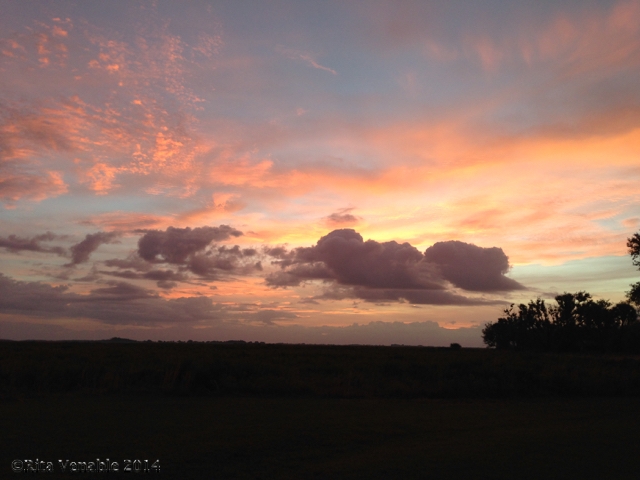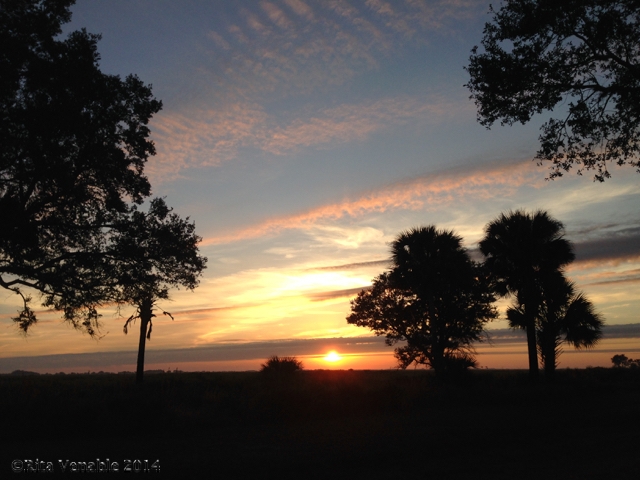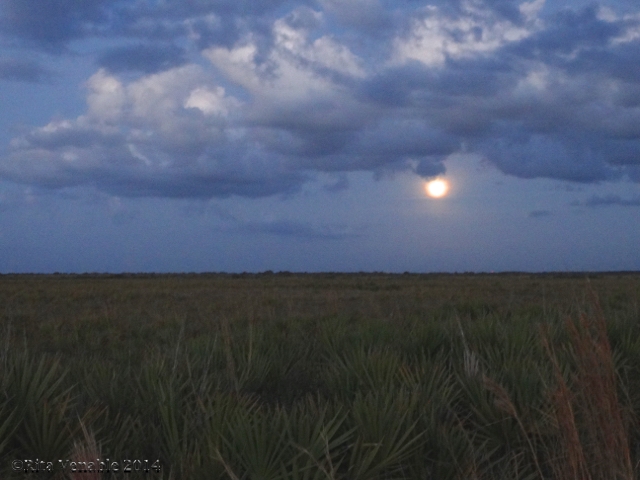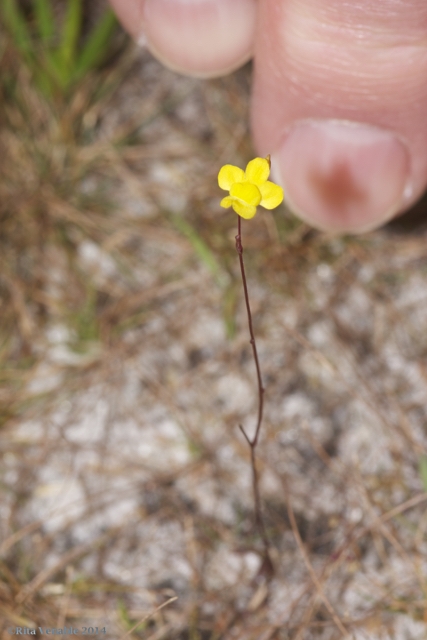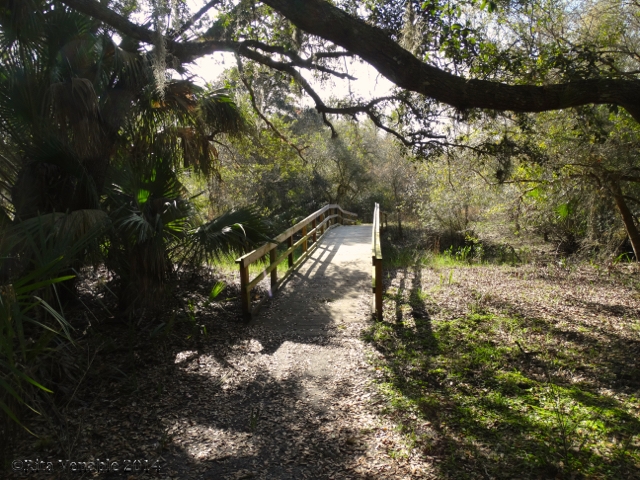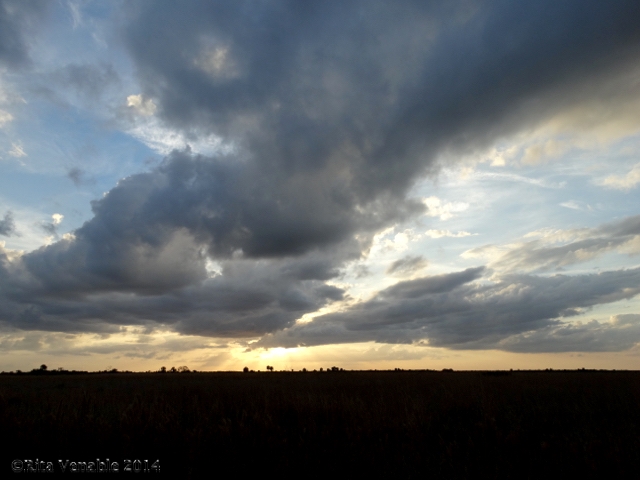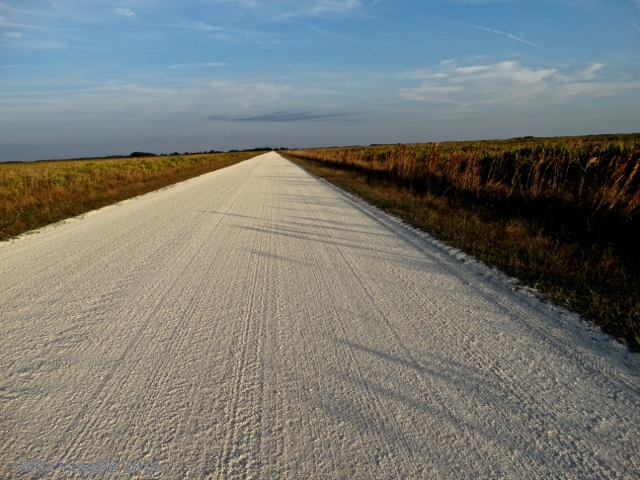What is scarce this time of year in Tennessee and what is so abundant at Kissimmee Prairie Preserve State Park in Florida is light—warm, life-giving, encouraging light.
There is the obvious light and radiant heat of the sun where the cold-blooded warm up—the Queen, the black racer, and the gator. Light that started as a tiny spot on the horizon, then spread horizontally and vertically until it washed over everything, and stayed for hours until it quietly faded with only elongating shadows signaling its departure.
Sunrises occurred at about 7:15 a.m. each day. Our campsite faced east, a good vantage point to watch the sky. Some mornings were chilly (50 or so degrees F.), but Argo had to be walked, so we usually saw the morning sun. The moon was sinking just as the sun was rising.
When the night sky was clear, the moon and stargazing were amazing. About 7:15 p.m. each night, retired Professor Bill Nigg provided a telescope and an astronomy program for the public. We saw the just-discovered Comet LoveJoy. Dr. Nigg explained that comets are like snowballs and asteroids are like dirt balls.
In between these times of day—between the sunrise and the rise of Polaris, the North Star, there were subtle lights—reflections of light on the ibis drinking pools and the gator-lounging creeks, the tiny shadow of a bladderwort flower on my fingernail,
the butterfly shadow on the leaf,
the dappled light on the footbridge,
the light behind the clouds,
and the grass shadows on the road in the morning as we walked.
Between the events of the sunrises and the stars at night were the understated lights that my eye or brain did not capture. Most of my life is lived in these shadowy and obscure lights of awareness. I think that I see, hear, and feel alertly, but am I missing the best as I sally forth each day looking for dramatic beginnings and endings? What poignant words have I missed in conversations because I wasn’t listening? What beauty have I walked by in my neighborhood as I longed to see great mountains?
Once, I took a drawing course at a local community center. One of the drawing exercises the instructor assigned us was to draw some object upside down so that our brains did not miss anything. “The purpose of this kind of practice is to force your left (thinking) side of the brain to give up identifying what you draw,” writes Betty Edwards in Drawing on the Right Side of the Brain. The brain can be an obnoxious know-it-all when it comes to observation. Throw a few worries into the mix, and a lot is overlooked.
I want to slow down and look at the lights. Will it take walking around upside down before I see them?
